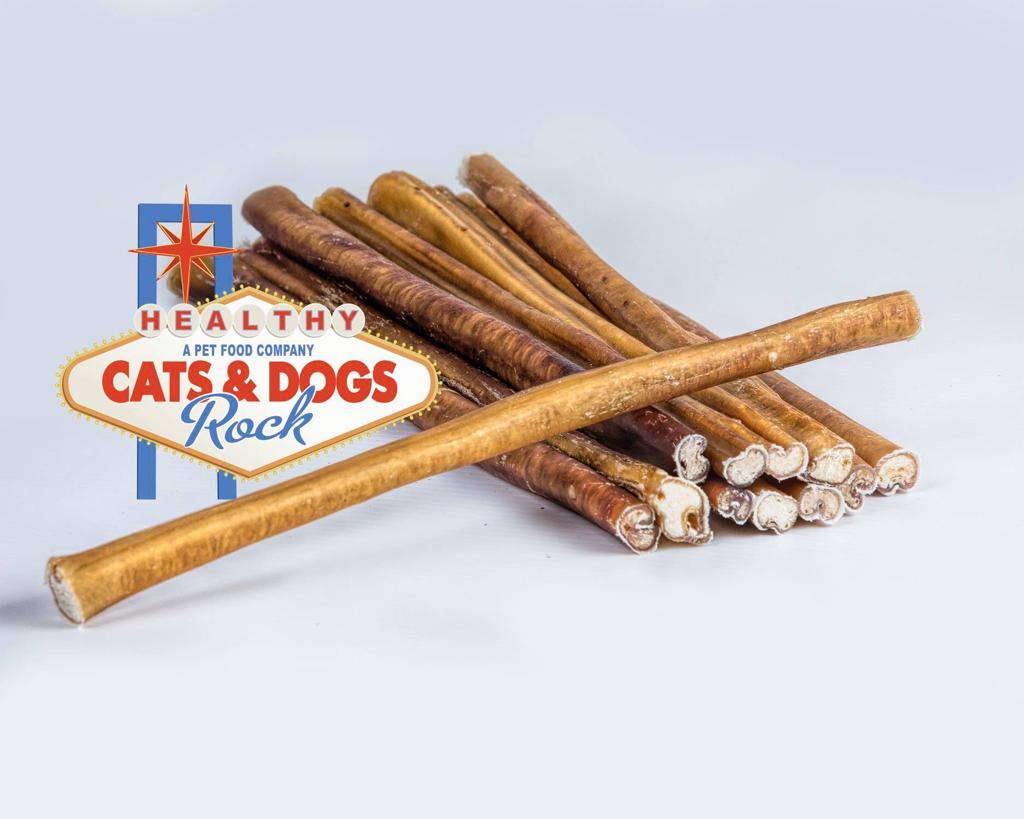You’ve more than likely seen bully sticks for sale on-line or at your favorite pet provide retailer and have heard that canine love them for the chewing process — and style — they provide. However, there are some public misconceptions about what, exactly, bully sticks are.
What Are Bully Sticks?

Think about what bully sticks are made from? Chances are, you don’t.
“There tends to be confusion about this. Many people think bully sticks are made of muscle, but they are not,” says Dr. Kerri Wiedmeyer, an emergency veterinarian with WVRC Emergency & Specialty Pet Care in Waukesha, Wisconsin.
Bully sticks are digestible dog treats products of the dried steer or bull penis (you read that as it should be), which is considered an animal by way of product.
“Many people are against giving by-products (or any product that is not meat or muscle), but bully sticks are in that category,” says Wiedmeyer.
Bully sticks, also known as pizzle sticks, are available dried, raw, or cooked shape, as well as in quite a lot of dimensions, sizes, shapes (including braided), and flavors. They are laborious inconsistency, which allows for canines to chew on them, says Wiedmeyer.
And they may be able to stink, says Dr. Cailin Heinze, a veterinarian at Tufts University’s Cummings School of Veterinary Medicine. A former roommate’s dog chewed on them and, “when they got wet, they smelled like a dead animal — we couldn’t get the smell out of the house,” she says.
They too can odor like urine, says Dr. Judy Morgan, a holistic veterinarian based in New Jersey. But “the longer they are dried or the more moisture removed by cooking, the less odor they will have.”
Are Bully Sticks Safe?
Unlike puppy meals, the puppy treat industry isn’t regulated, says Dr. Donna Raditic of Nutrition and Integrative Medicine Consultants in Athens, Georgia. As an end result, there are some concerns for possible for bacterial contamination if bully sticks aren’t cooked accurately.
“It’s along the lines of feeding your dog a raw diet in terms of bacterial contamination. But most owners don’t think about it because bully sticks are dry and hard,” says Heinze.
There also isn’t a large number of research on the topic of bully stick safety. One finds out about analyzed the dietary and microbial components of bully sticks. Of the 26 bully sticks purchased, one contained C. difficile, one had methicillin-resistant S. aureus, and seven had E. coli.
“This study demonstrated that, while low, these treats can be contaminated with serious strains of bacteria,” says Wiedmeyer.
Raditic, who is board-certified in veterinary nutrition, doesn’t recommend bully sticks for her sufferers because of bacterial contamination considerations. Nor does she suggest other types of animal-sourced canine chews akin to livestock hooves, pigs’ ears, over-the-counter rawhides, bones, or trachea.
“I prefer that owners use toys that can be filled with healthy treats, or I give owners very specific treat or chew recommendations as part of a complete nutrition plan for that pet,” she says.
Another safety concern with bully sticks is that dogs can also probably fracture their tooth on them.
“This is controversial, as some dentists and oral surgeons recommend these treats to remove tartar, and while others have noted them to cause tooth fractures,” says Wiedmeyer.
Where Can I Buy Bully Sticks?
Regardless of their safety, canine completely loves bully sticks, says Heinze. “They’re super popular–probably one of the most popular dogs treats on the market.”
If you do come to a decision to buy bully sticks for your canine, Heinze suggests choosing ones that can be in my view packaged, as contamination rates may be less because they’re not open to air or mingling with other bully sticks.
Make sure to buy your bully sticks from a competent supply, and ask questions of the supplier, like if they’ve ever had any recollects for their products, suggests Morgan. She also recommends warding off bully sticks which were washed the usage of chlorine or chemical substances.
How to Give Your Dog a Bully Stick
As with any treat, bully sticks should be given every now and then and with supervision, says Wiedmeyer.
Though maximum canines will bite on bully sticks, some can try to swallow massive pieces immediately, which will reason choking, Morgan says
In addition, it’s hard to gauge the dietary content of a bully stick (and many do not have product labels), however, owners must be aware that they may be able to be high-calorie deal with, Heinze says. So, in the event you’re staring at your dog’s calorie consumption, it is attention to bear in mind.
Your canine is most likely not going to pass up the chance to chow down on a bully stick, nevertheless, it’s up to you and your vet to determine if bully sticks will fit into your canine’s well being and wellness plan. If making a decision bully sticks aren’t a good option in your dog, there are other wholesome treats you can be offering that may satisfy her need to bite.